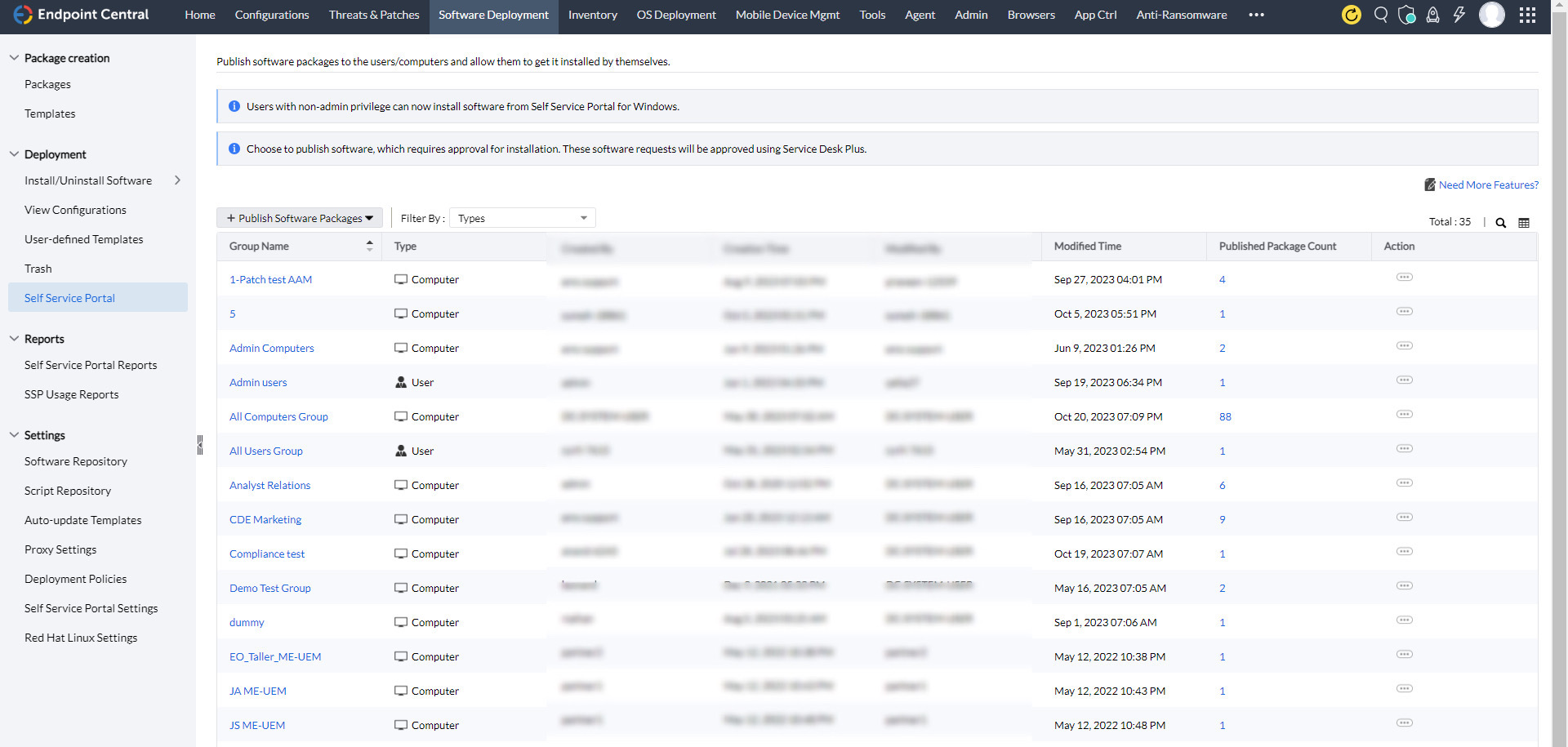With employees working from anyplace and on any device, the organizational boundary has moved from the traditional corporate network perimeter to every endpoint network. Employees wish to readily access their work apps and resources from a device of their choice while IT teams struggle to balance between ensuring availability and ensuring security.
At the same time, enterprises are striving to cut down on IT costs and meet their environmental, social, and governance goals while keeping their employees delighted at the same time. While these might look like disparate objectives, they are interconnected goals that can be achieved with a combination of unified endpoint management and security (UEMS) and end user experience management (EUEM) tools.
End user experience management (EUEM), also referred to as Digital Employee Experience (DEX) monitors the performance of applications, operating systems, devices, and all other resources in the network, and the way the end user interacts with them. With EUEM, IT admins obtain a holistic, real-time overview of the end user's experience in addition to automated troubleshooting and remediation capabilities.
Endpoint Central can deliver EUEM and UEMS from the same console. This page provides you with an overview of how Endpoint Central contributes to improving the digital employee experience (DEX) and caters to the IT team’s need to provide a secure, anywhere workplace.
Endpoint Central has over 1,000 telemetry collection points on managed endpoints. We have built an insights engine using this extensively relayed telemetry as a base layer. Contextually placed dashboards deliver these insights in the relevant sections within the product. For example, application deployment statuses are relayed in near-real time so you can get instant updates on failures and why they have occurred. Additionally, this relayed telemetry helps execute pre- and post-deployment workflows set up by the IT and DevOps teams.
The dashboard below is one such example where our AI-based assistant, Zia, provides insights into Windows end-of-life devices and updates on incompatible devices:
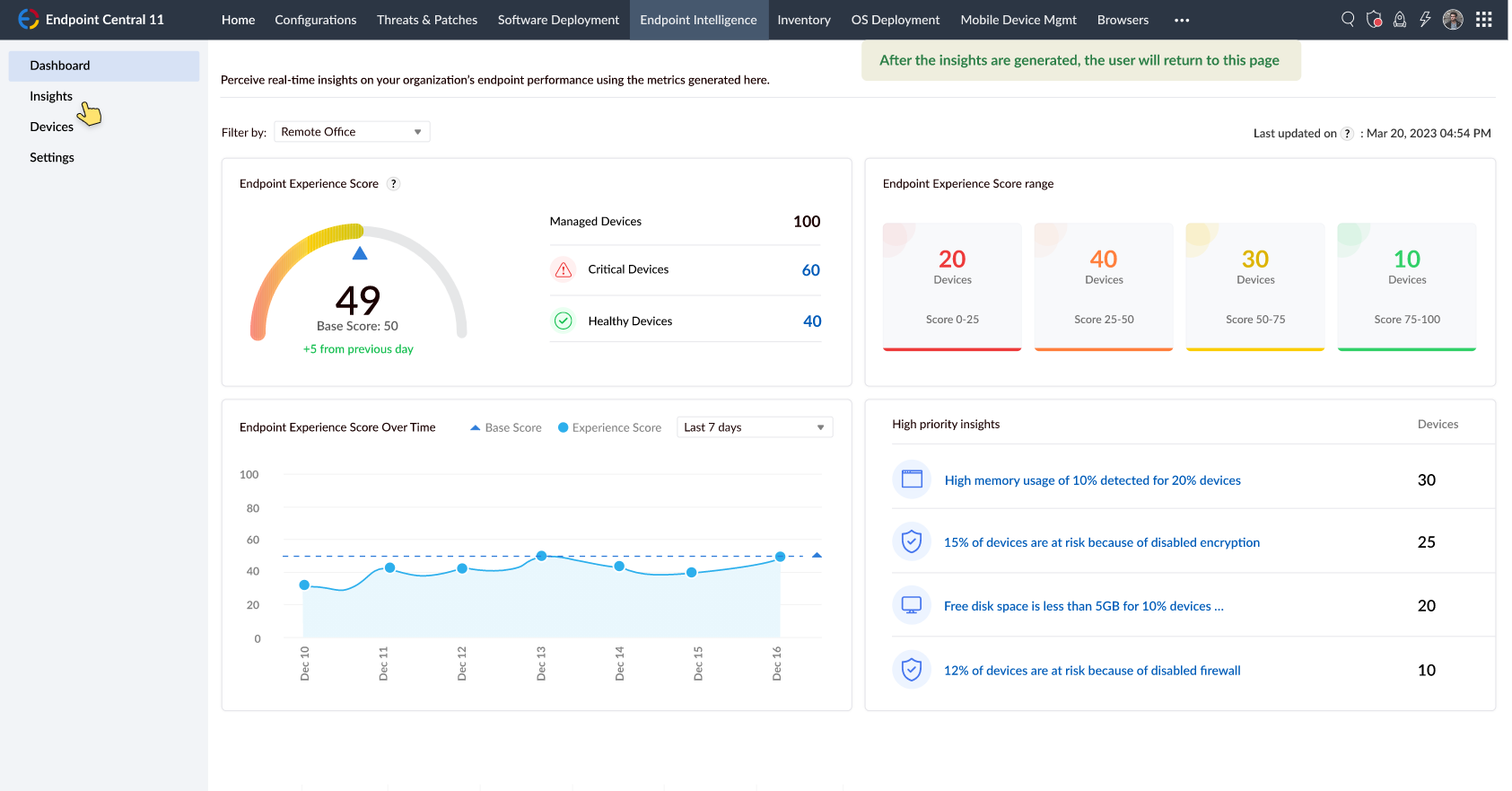
With Endpoint Central's EUEM, you can generate instant reports from the dashboards and access even more customizable reports that cover the DEX, users, assets, and security in an intricate fashion. You can obtain additional reports by querying the database.
Endpoint Central has built-in alerting mechanisms to notify admins about issues in real time through emails, mobile and console notifications, and SMS messages. This is functionally achieved through our telemetry engine that relays information to the server in real time. Furthermore, tickets can be automatically created in ITSM tools to ensure that these alerts do not go unnoticed or undocumented. Endpoint Central alerts admins about expiring licenses or certificates, driver or BIOS issues, newly detected or faulty hardware, removed or added software, missing updates, and more.
By integrating with our business intellIigence offering, ManageEngine Analytics Plus, managers and decision-makers can get consolidated insights into the quality of the employee experiences across their IT eco system.
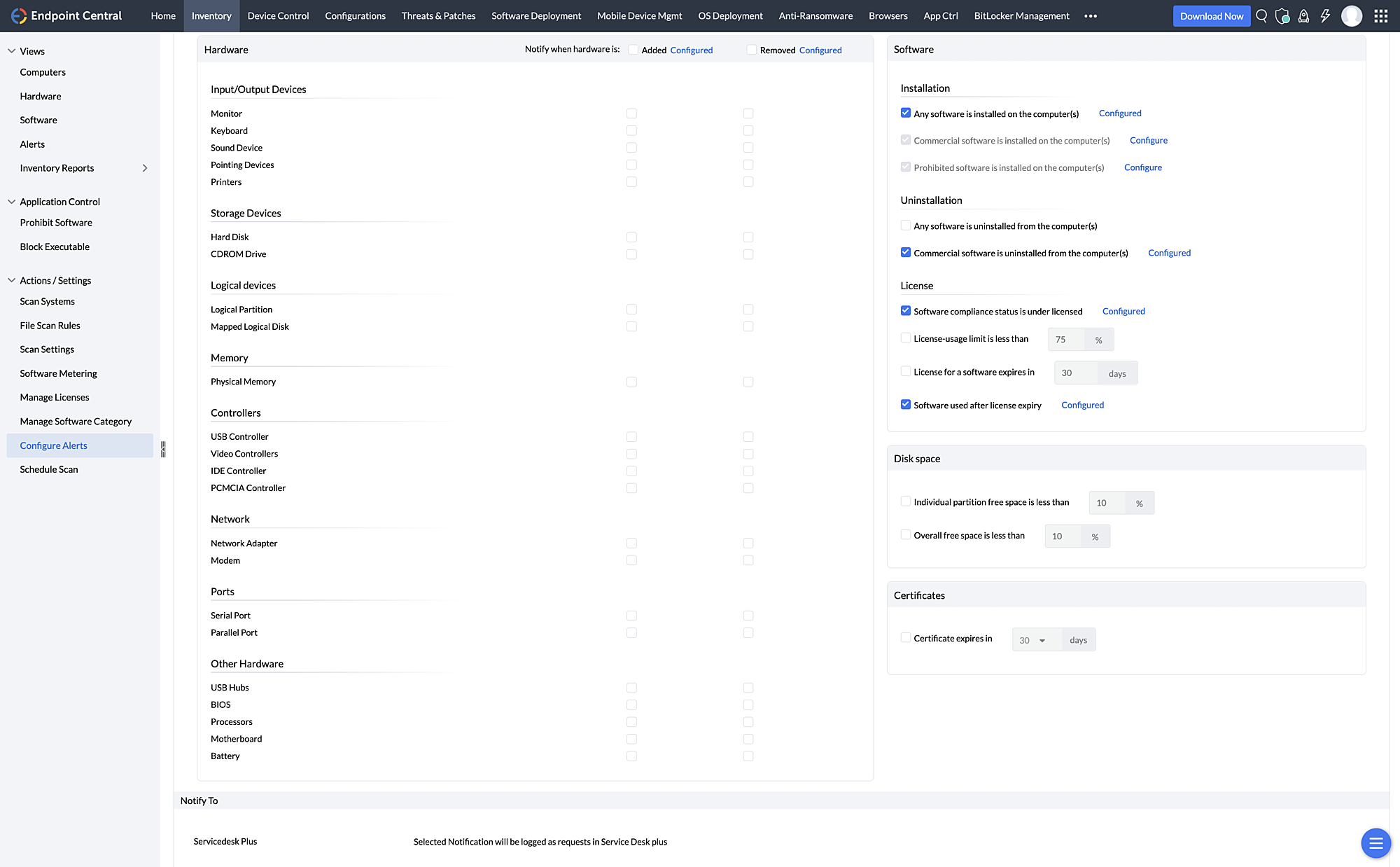
Endpoint Central comes with a host of built-in automations to course-correct endpoint deviations and ensure that problems are identified and rectified at scale before they actually affect the experiences of end users. For fixes requiring multiple steps and navigation, we provide a dedicated script library that organizations can expand by adding custom scripts.
Some of Endpoint Central's Digital Employee Experience Management capabilities include checking for the presence of software and patches, automatically reapplying device baseline policies to correct deviations, provisioning applications with the necessary credentials and configurations for zero-touch app setup, automating restarts of devices and servers, clearing application caches, and cleaning up hard disk drives.
By integrating with ITSM and ESM offerings, such as ManageEngine ServiceDesk Plus or ServiceNow, enterprises can create workflows that improve the employee experience. For example, devices can be provisioned with all the necessary access and resources for new employees based on their role and department as indicated in the HRMS or ESM portals. Also, user profiles can be migrated individually or in bulk to new endpoints when faulty devices are replaced or when digital transformation projects are undertaken.
Furthermore, Endpoint Central is listed in the Zoho Flow marketplace along with 850 other enterprise applications. Leveraging this listing, IT teams can orchestrate complex use cases with little to no code.
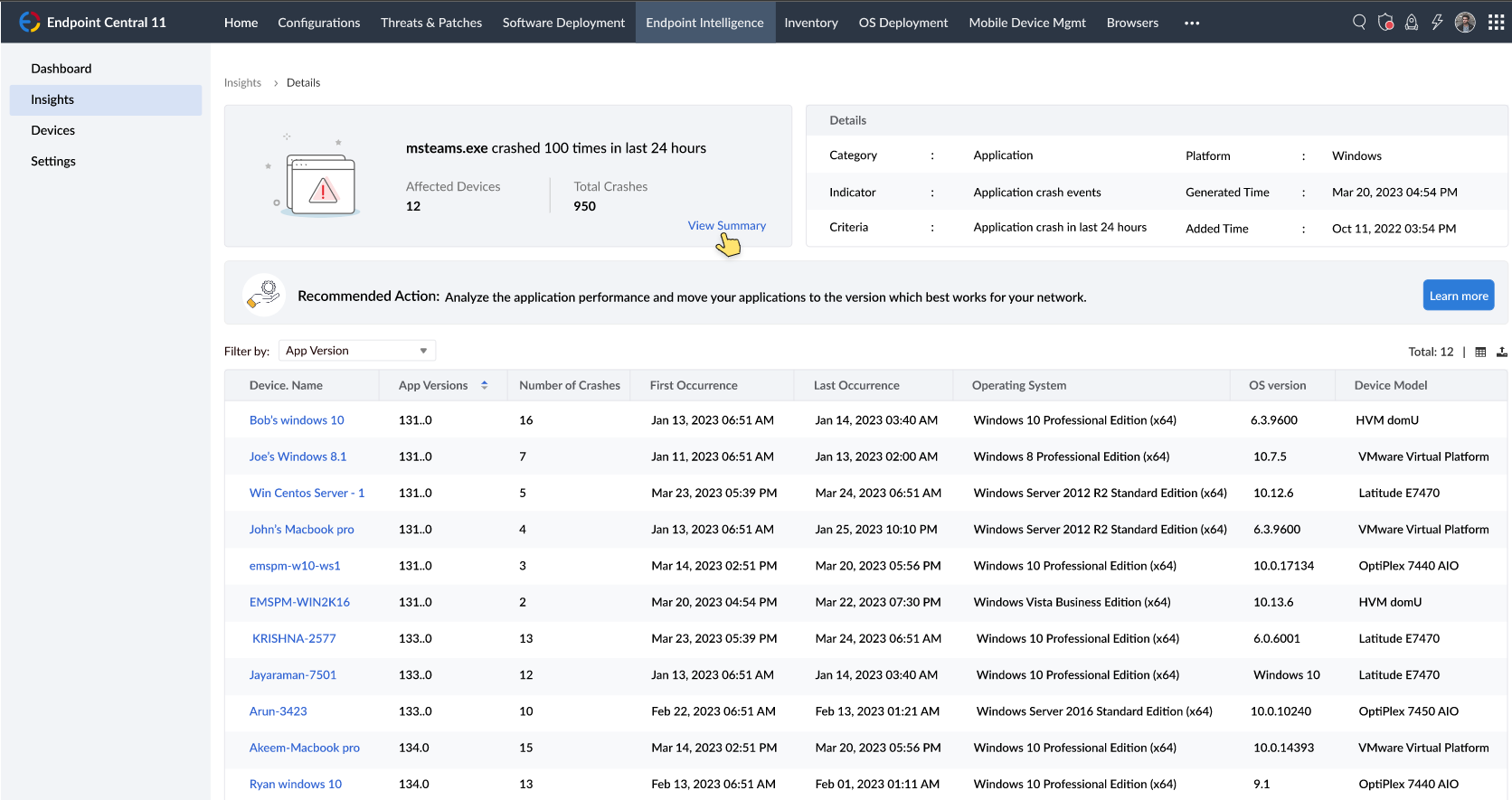
To expedite cause identification and resolution for problems, Endpoint Central provides admins with remote access to critical troubleshooting tools, like Windows Task Manager, Command Prompt, Windows PowerShell, Windows Registry, Event Viewer, and Windows Services. Using these tools, admins can narrow down and pinpoint the root cause. To aid with issue resolution, admins can then remotely take control of the endpoints with our built-in HIPAA-compliant remote troubleshooting tool that works on Windows, macOS, Linux, Android, iOS, and iPadOS devices.
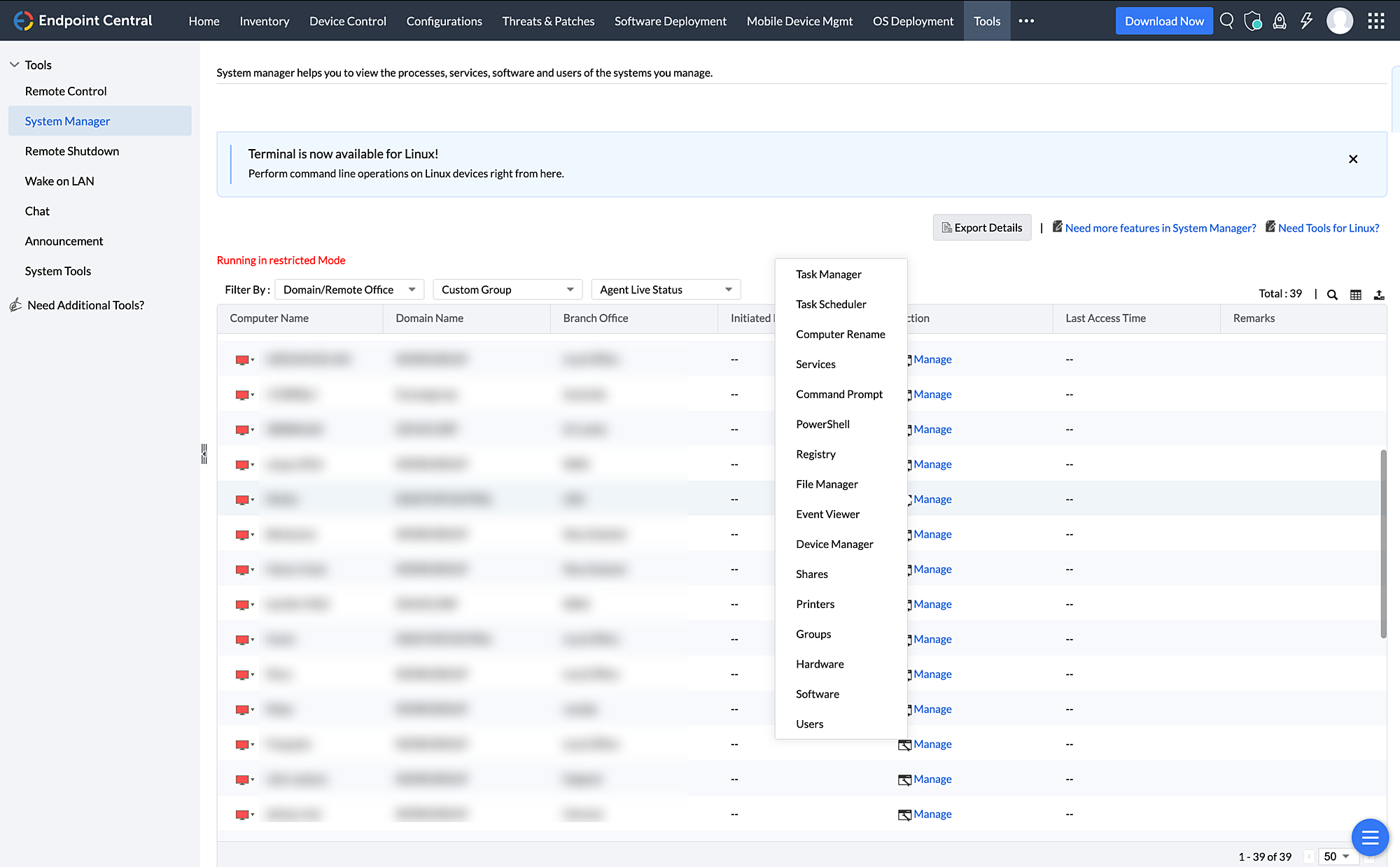
Empowering employees and engaging with them are critical to maintaining an excellent employee experience . Endpoint Central caters to such needs with a unified self-service portal that gives users the power to install necessary apps or updates, access critical resources, and view company notifications and announcements. This ensures that employees do not have to wait for admins to address their requests and issues.
You can engage employees through emails, notifications, voice calls, video calls, and text messages—all from within Endpoint Central—to keep them informed of any issues; the statuses of their requests; and critical, company-wide events or maintenance. Furthermore, you can publish micro-surveys and employee sentiment analysis surveys on the self-service portal to gauge employees’ emotions after every IT touchpoint by leveraging our integration with ServiceDesk Plus.
